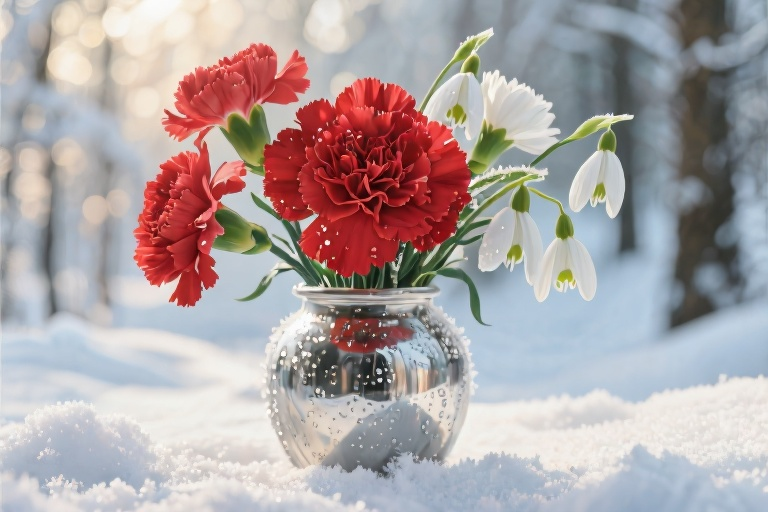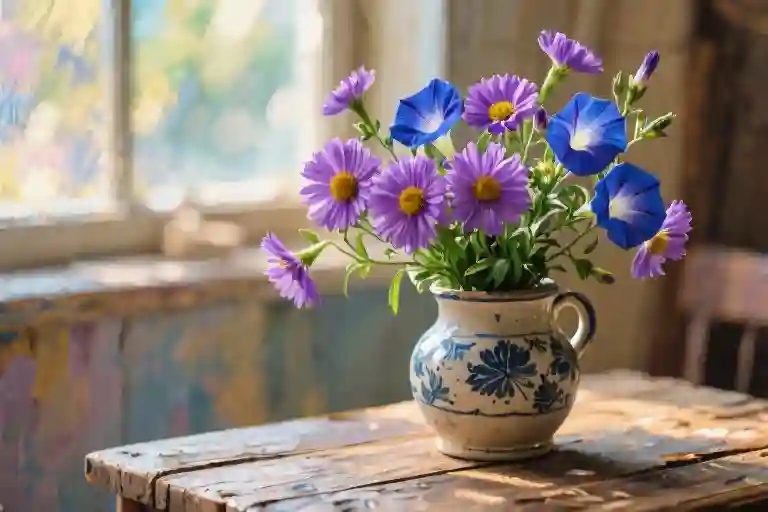There’s something quietly magical about May. As spring settles in and the world shakes off winter’s grip, this month carries a particular promise of renewal. It’s no coincidence that May’s birth flowers—Lily of the Valley and Hawthorn—embody this spirit so perfectly. These aren’t just seasonal blooms; they’re nature’s way of marking new beginnings, each with its own language of symbols and stories waiting to be told.
If you were born in May, have you ever wondered what secret messages your birth flowers carry? That delicate strand of Lily of the Valley bells might whisper different promises than the cheerful Hawthorn blossoms clustered along country lanes. One speaks of returning happiness, the other of enduring hope—two sides of the same hopeful coin that May flips for us each year.
What makes these flowers so special isn’t just their beauty, though there’s plenty of that. It’s how they’ve woven themselves into our celebrations and quiet moments alike. From royal wedding bouquets to humble May Day traditions, they’ve become living emblems of the season’s optimism. Over the next few sections, we’ll uncover why these particular flowers came to represent May birthdays, what hidden meanings they carry, and how you can bring their magic into everyday life—whether you’re choosing a meaningful gift or simply appreciating nature’s calendar.
Before we dive into their individual stories, consider this: in many cultures, May flowers weren’t just decorative. They were believed to hold real power—to protect homes, predict love fortunes, or ward off ill spirits. That heritage lingers in the way we still give flowers today, speaking through petals when words feel inadequate. As we explore Lily of the Valley’s sweet purity and Hawthorn’s resilient cheer, you might find yourself seeing these familiar blooms in a completely new light.
Lily of the Valley: May’s Whispering Bells
Few flowers capture the essence of May quite like Lily of the Valley. These delicate white blossoms hang like miniature chandeliers from slender green stems, their sweet fragrance carrying farther than their modest size would suggest. Each bell-shaped flower measures no more than a thumbnail, yet collectively they create an impression of quiet elegance that has captivated gardeners and romantics for centuries.
What makes this flower particularly special is its paradoxical nature. The same plant that produces such innocent-looking blooms contains cardiac glycosides – potent compounds that can be dangerous if ingested. This duality has fascinated perfumers and florists alike. Chanel famously incorporated synthetic versions of its scent into the iconic No. 5 perfume, transforming what grows wild in shady woodlands into a symbol of luxury.
The flower’s symbolism runs deep in European traditions. In France, the “muguet” arrives just in time for May Day celebrations, where people exchange sprigs as tokens of affection. British royal weddings have frequently featured Lily of the Valley bouquets, most notably in the Duchess of Cambridge’s bridal arrangement. These associations with purity and the return of happiness make it particularly meaningful as a birth flower for May babies.
Growing conditions reveal another layer of its character. Unlike showy blooms that demand full sun, Lily of the Valley thrives in partial shade, spreading gradually through underground rhizomes. This quiet persistence mirrors how happiness often returns – not with fanfare, but through steady, organic growth. The flowers emerge alongside broad green leaves that cup the stems protectively, creating natural bouquets perfect for intimate celebrations.
Modern florists appreciate its versatility. The simple white flowers pair beautifully with deeper greens in minimalist arrangements, or provide contrast when combined with bolder blooms like peonies. For May birthdays, a small posy of Lily of the Valley conveys thoughtfulness without ostentation – a floral equivalent of whispering sweet wishes rather than shouting them.
That intoxicating fragrance holds the key to its enduring appeal. On warm May mornings, the scent intensifies, drifting through gardens and triggering memories of springs past. Perhaps this explains why we associate it with happiness returning – its perfume arrives like a familiar melody, instantly transporting us to joyful moments. The flowers themselves may be fleeting, typically lasting just a few weeks, but their symbolic power persists throughout the year.
Hawthorn: The Wild Poet of Hope
Crumbling castle walls in Ireland still wear crowns of hawthorn blossoms each May, their gnarled branches softening with clusters of delicate white or pink flowers. Unlike the cultivated elegance of lily of the valley, hawthorn bursts forth with untamed vitality – five-petaled blooms huddled together like old friends sharing secrets. The leaves release an almond-like fragrance when crushed, while the berries (called ‘haws’) blush crimson by autumn, treasured by herbalists for their heart-supporting properties.
This resilient tree carries centuries of human longing in its thorny embrace. Celtic traditions revered hawthorn as the fairy tree, its blossoms marking doorways to other worlds. Families would cut branches for May Day celebrations, weaving them into protective wreaths while avoiding the ‘lone hawthorn’ believed to house temperamental spirits. In Christian symbolism, the crown of thorns was said to be hawthorn, transforming its sharpness into a metaphor for sacred suffering and renewal. Greek brides tucked hawthorn flowers into their hair for fertility blessings, a practice that evolved into Victorian ‘hope’ bouquets for new mothers.
Modern applications honor this heritage. A sprig of hawthorn above doorways continues in some Irish villages each May, now joined by contemporary rituals:
- Steeping dried flowers for tea that calms nervous tension
- Pairing fresh blossoms with sunflowers in ‘courage bouquets’ for hospital visits
- Crafting berry-infused honey to drizzle over cheeses, connecting the tree’s medicinal and culinary gifts
Yet hawthorn demands respect – those same beneficial berries contain cyanide precursors in their seeds. Like many symbols of hope, it reminds us that strength often grows from understanding boundaries. When a storm snaps its branches, hawthorn simply reshapes itself, blooming again when May returns. Perhaps that’s the deepest lesson woven into those clustered petals: resilience isn’t about perfection, but the quiet determination to keep offering beauty, thorns and all.
Bringing May Flowers to Life
The magic of May birth flowers isn’t just in their symbolism—it’s in how they transform everyday moments. Whether you’re crafting a birthday bouquet, decorating a spring tablescape, or simply bringing nature indoors, Lily of the Valley and Hawthorn offer endless possibilities. Here’s how to make them work beyond the garden.
Floral Alchemy: Three Signature Styles
1. The Classic Whisper
Pair Lily of the Valley with baby’s breath and eucalyptus for a minimalist arrangement. The tiny white bells against wispy greens create a bridal-shower freshness—perfect for May birthdays or Mother’s Day centerpieces. Pro tip: Use a clear glass vase to highlight the stems’ delicate curvature.
2. The Wildwood Charm
Hawthorn’s clustered blossoms thrive in loose, rustic compositions. Combine them with chamomile daisies and trailing ivy for a countryside vibe. This style shines in mason jars or woven baskets, ideal for outdoor gatherings celebrating spring’s arrival.
3. The Twilight Duet
For drama, mix both birth flowers. Nestle Lily of the Valley sprigs amid Hawthorn branches in a low ceramic bowl—the contrast between dainty and woody textures mirrors May’s balance of tenderness and vitality. Add a few blush peonies if you crave color.
Keeping the Magic Alive
Cut flowers can be fleeting, but these tricks extend their stay:
- Lily of the Valley: Trim stems underwater to prevent air bubbles, and refrigerate overnight (they’ll last up to 7 days). Avoid direct sunlight—their porcelain-like blooms fade faster than a spring shower dries.
- Hawthorn: Sear stem ends with boiling water for 30 seconds before arranging. Mist petals lightly; they dehydrate slower than their thorny reputation suggests.
A word to the wise: That enchanting Lily of the Valley fragrance comes with a caveat. Every part of the plant contains convallatoxin—harmful if ingested. Keep arrangements away from curious pets and toddlers (though the risk is low with casual handling). Hawthorn berries, while medicinal in teas, need professional preparation to avoid stomach upset.
When Flowers Speak Louder
These blooms carry meanings deeper than their roots:
- Tuck a Hawthorn sprig into a graduation card as a nod to hope and new chapters.
- Gift potted Lily of the Valley to someone recovering from hardship—a living reminder that joy returns.
- Pressed flowers make poignant bookmarks; laminate them with a handwritten note about their symbolism.
May’s birth flowers don’t just sit prettily in vases. They’re storytellers, healers, and silent cheerleaders. The real artistry lies in matching their language to life’s quiet milestones—no grand gestures needed.
Closing Thoughts: The Language of May Blooms
These delicate blossoms speak in a vocabulary older than words. Lily of the Valley whispers of promises kept and happiness returning like spring tides, while Hawthorn stands as a living testament to enduring hope. They’ve carried these messages through centuries – tucked into royal bridal bouquets, woven into May Day garlands, pressed between the pages of love letters.
Consider this your invitation to join that tradition. Whether you’re selecting a birthday gift for someone born in May (perhaps pairing Lily of the Valley with their morning coffee), decorating your porch with Hawthorn branches for good fortune, or simply pausing to admire these seasonal wonders, you’re participating in an ancient dialogue between humans and flowers.
Next month, we’ll continue this floral conversation with June’s birth flowers – the hydrangea’s mophead blooms that change color with soil chemistry, nature’s own mood ring. Until then, remember the secret language we’ve uncovered: that true happiness, like May flowers, often arrives in small, fragrant packages.
As the old floral proverb goes: ‘He who plants kindness gathers love.’ May your days be filled with both.




